Picking out the best diapers for your little ones can be a headache. You want them to be non-toxic and safe for your baby’s skin and overall development, but you also need them to work.
There’s good and bad news when it comes to organic and non-toxic diapers:
The bad news is that truly 100% organic diapers don’t really exist (sorry).
But the good news is that compared to just a decade ago, it’s much easier to find better diapers that are made with plant-based, non-toxic materials and can compete with conventional disposable diapers on function and price.
So this guide is going to tell you what you want to know about the ingredients and materials used in diapers along with the best brands to choose from.
But first, an important note: Needless to say, there’s a LOT to worry about when it comes to parenting, and the specific ingredients in diapers is just one of them. If switching to low-tox products is overwhelming for you, try to just take it one thing at a time and focus on what you can control. Remember that the most important thing your child needs from you is love, not perfect products. And you’re doing a great job!
P.S. Many of the brands below carry wipes too, but if you’re interested in a more detailed breakdown of what to look for in non-toxic disposable baby wipes, check out this guide. And for organic reusable reusable baby wipes, click here.
Table of Contents
- The Best Non-Toxic Diapers at a Glance:
- “Organic” Disposable Diapers Don’t Actually Exist
- Things to Avoid in Baby Diapers
- Better Ingredients for Disposable Diapers
- 1. Plant-Based Synthetics
- 2. Other Natural Materials
- 3. A Minimal Amount of Other Synthetics
- 4. Totally Chlorine Free (TCF) Whitening
- What About Latex?
- Ink or No Ink?
- What’s the Deal With Bamboo Diapers?
- Is There a 100% Biodegradable Diaper?
- Disposable vs. Cloth Diapers (Pros & Cons)
- How to Save Money on Non-Toxic & Organic Baby Diapers
- The Best Non-Toxic Disposable Diapers
- Healthybaby
- Kudos
- Eco by Naty
- Ecoriginals
- Honest
- Coterie
- Hello Bello
- Dyper
- Freestyle
- ATTITUDE
- Thrive Market
- Even More Disposable Diaper Brands!
- What About Huggies?
- What About Pamper’s?
- What About Cuties?
- What About Kirkland’s Diapers from Costco?
- Better Ingredients for Reusable Cloth Diapers
- The Best Organic Cloth Diapers
This article contains affiliate links, which means we may earn a commission if you decide to make a purchase.
Featured Image Credit: Healthybaby
The Best Non-Toxic Diapers at a Glance:
Best Non-Toxic Disposable Diapers (Overall): Healthybaby
Most Affordable Disposable Diapers: Kudos
Best Disposables Available in Stores: Honest
Best Disposable Diapers for Older Children: ATTITUDE
Best Organic Cotton Reusable Cloth Diapers: Esembly
+ a lot more brands to check out below!
“Organic” Disposable Diapers Don’t Actually Exist
Before you can decide which diapers are the best for your little one(s), it’s worth understanding that 100% organic diapers aren’t actually a thing.
A couple of brands use a bit of conventional and/or organic cotton in certain parts of their diapers, but that’s not what the majority of the diaper is made out of.
This is mostly because no one has yet figured out how to make an organic diaper that has the qualities parents have gotten used to in disposable diapers: super absorbent, leak-proof, fits well, etc.
Instead, your best options for disposable diapers are ones that are made out of plant-based synthetics and other natural materials, and that are free from mystery additives like fragrances and lotions.
The good news is that there is actually no shortage of non-toxic diapers made out of these materials these days!
Things to Avoid in Baby Diapers
In 2019, a study funded by the French Agency for Food, Environmental and Occupational Health & Safety (ANSES) tested 23 different types of diapers and found toxicants of various kinds, including dioxins, formaldehyde, PCBs (polychlorinated biphenyls) and PAHs (polycyclic aromatic hydrocarbons).
That same year, another study also found phthalates and VOCs (volatile organic compounds) of various kinds in baby diapers as well as sanitary pads.
Why are these harmful chemicals in diapers?
Well, some of them are there because most conventional diapers are made from plastic, which means they naturally contain some of these petroleum byproducts.
Other chemicals are there because of the chlorine bleaching process. (This is why we recommend diapers that are processed using the totally chlorine free, or TCF, method—more on that below.)
And some of them are actually added to diapers intentionally. Phthalates, for example, are commonly found in fragrances and lotions (which is why we recommend choosing diapers that are free from these additives).
Better Ingredients for Disposable Diapers
Here’s what to look for instead:
1. Plant-Based Synthetics
As mentioned above, most conventional disposable diapers are made almost entirely out of plastic, which is not only less eco-friendly, but it also means there’s greater likelihood that they could contain some of the toxicants listed above.
Plant-based synthetics are not perfect (they still have to go through a pretty intense manufacturing process), but they are at least a better, petroleum-free option.
The main kinds of plant-based synthetics you’ll find in diapers include:
- Polyethylene
- Polypropylene
- PLA (polylactic acid)
These materials are most commonly sourced from plants like:
- Eucalyptus
- Wood pulp
- Corn starch
- Sugar cane
You’ll see a lot of the diapers below come with third-party certifications that provide a certain amount of accountability for brands to ensure their plant-based materials have been sourced in a responsible way that doesn’t contribute to deforestation.
The two main certifications you’ll see are FSC (Forest Stewardship Council) and SFI (Sustainable Forestry Initiative). These certifications mean generally the same thing, they’re just run by different organizations. When you see these certifications, it doesn’t mean the whole diaper is certified; rather, it’s mostly referring to the wood pulp used in the absorbent core of the diaper.
2. Other Natural Materials
You’ll find a few of the diapers below also use cotton in their diapers as well. Healthybaby, for example, uses 15% organic cotton in the outer layer of their diapers. And Kudos is actually the only brand that puts a sheet of (non-organic) cotton on the innermost layer of the diaper that touches the baby’s skin.
3. A Minimal Amount of Other Synthetics
There aren’t actually any diapers that are 100% free from ALL petroleum-derived derivatives. Most disposable diapers contain at least some SAP (super absorbent polymer), and apparently no one has figured out how to make a diaper core that’s made completely from natural resources AND actually does the job it needs to do. Some brands also use other synthetics like polyester for the diaper backsheet.
Even cloth diapers, which actually can be made with 100% organic cotton for the inner layer still need an water-resistant outer cove, which is usually made from TPU (a plastic).
So, for now we look for brands that are using the least amount of petroleum-derived plastics as possible. The recommended brands listed below are using anywhere from about 50-90% naturally-derived materials.
Additionally, we look for brands that are free from other kinds of synthetic additives like phthalates and parabens.
4. Totally Chlorine Free (TCF) Whitening
Many of the harsh chemicals that end up in diapers are a result of the bleaching process.
Most bleaching processes use chlorine, which produces toxic dioxins and furans. Dioxins are considered persistent environmental pollutants (POPs), which accumulate in the food chain (mainly in the fatty tissue of animals).
According to the World Health Organization (WHO), dioxins “can cause reproductive and developmental problems, damage the immune system, interfere with hormones and also cause cancer.” Furans can cause eye, skin, and mucus membrane irritation and are also carcinogenic.
There are multiple different bleaching methods, but the main one you’ll want to look for in diapers is TCF, or totally chlorine free. As the name indicates, this method uses zero chlorine or chlorine-derived products at all.
What About Latex?
Latex is not toxic, but it can be irritating for some little ones, especially those with extra sensitive skin. That’s why most of the brands below make diapers that are completely latex-free.
Ink or No Ink?
Lots of diapers are still just plain white, but of course there are all kinds of fun designs available these days as well.
One reason to go for the plain white diapers is because it’s just one less ingredient you have to worry about. Dyes and inks are often made from petroleum-derived ingredients and traditionally can be contaminated with heavy metals like lead.
Most of the non-toxic diaper brands that do use colorants use language like “non-toxic inks” and “dyes without any heavy metals” on their ingredient lists, which is great… But you just kind of have to take their word for it; there’s not much to verify that.
We’ve included both plain and colored diapers below so you can choose your preference.
What’s the Deal With Bamboo Diapers?
There are several brands out there making absorbent cores made out of bamboo as well. Bamboo is a pretty good option in part because it grows really fast and doesn’t need a bunch of herbicides and pesticides.
However, the way bamboo is processed can include some pretty toxic chemicals. You can read more about this issue here, but in short: you want the bamboo to be processed using a closed-loop system that prevents these toxicants from being dumped into waterways and therefore poisoning workers and communities.
So far, the only bamboo diaper companies we’ve found that use a closed-loop process are Dyper and Freestyle, which we’ve included in our recommendations below. We reached out to a number of other bamboo diaper companies to ask for more info and will add them to our list if and when we hear back from them!
Is There a 100% Biodegradable Diaper?
Nope, sorry. Truly biodegradable diapers are not really a thing. The recommended brands below are made from partially biodegradable/compostable materials, but none of them are 100%. And if you can’t compost the whole thing, then it’s not really compostable at all.
The brand that seems to have come the closest is Ecoriginals—they say their diaper is currently made from 90% biodegradable materials. And then there’s Dyper, who partnered with Terra Cycle to create a pickup program that takes your dirty diapers and turns them into biochar.
So, it does seem like diaper manufacturers are getting closer to creating a single-use option that’s actually biodegradable. But until then, don’t be fooled by “biodegradable” claims.
Disposable vs. Cloth Diapers (Pros & Cons)
At the bottom of this article, you’ll find more info about reusable cloth diapers, common materials used, and a few organic reusable diaper brands to check out.
Of course, reusable cloth diapers used to be the norm, then single-use diapers seemed to take over, and now cloth diapers are experiencing a sort of resurgence as parents have become more mindful of single-use plastic products.
There are of course pros and cons to using both kinds of diapers, and everyone has to make the best decision for them and their family. Many parents are even mixing it up; for example, using cloth diapers at home and then disposables when they’re at daycare, on vacation, or just on-the-go.
Here are some things to consider as you decide what’s best for you:
Disposable Diapers
- More synthetic material (and just more ingredients in general to worry about)
- Less cost upfront, but more expensive over time
- Less washing
- More wasteful
- Better for on-the-go
Reusable Cloth Diapers
- Less ingredients to worry about in general and more organic material available (you can actually have 100% organic cotton fabric against your baby’s skin)
- More upfront cost, but less cost over time
- More laundry
- Less waste to the landfill
- Not always great for on-the-go, babysitters, etc.
How to Save Money on Non-Toxic & Organic Baby Diapers
Bad news: diapers are expensive. I’m sure you already know that.
Good news: most of the non-toxic diaper brands recommended below are in the same price range as the conventional diaper brands that most parents use, like Pampers and Huggies. So if you’re going to be spending that much on diapers either way, why not go for the better ones?
The best way to save money is to sign up for a diaper subscription. Almost all of the brands below offer both one-time purchases that allow you to try out a small amount of the diapers to make sure you like them.
But then after that, you can sign up for a monthly subscription and save around 10-30%. A lot of the brands also offer extras like free shipping, free bonus products, and the ability to change or cancel your subscription at any time.
Of course, another way to save some coin is to choose cloth diapers instead. They require a bit more of an up-front cost, but they’ll save you money over a long period of time (especially if you have multiple kids!) because you won’t have to keep buying them.
The Best Non-Toxic Disposable Diapers
Now let’s get to our list of non-toxic disposable diapers. Although some of the brands are slightly more specific and transparent about the ingredient breakdown of their diapers, most of the brands below are made mostly from the same materials. They all contain at least some plant-based synthetic material like chlorine-free wood pulp, combined with at least a little bit of conventional synthetic material like the SAP absorbent core and/or a polyester backsheet.
So basically, the recommended brands below are made from various amounts of plant-based materials, but none of them are 100% natural or plant-based. However, they are all free from:
- Chlorine
- Fragrances
- Lotions
- Parabens
- Phthalates
- Latex
Healthybaby
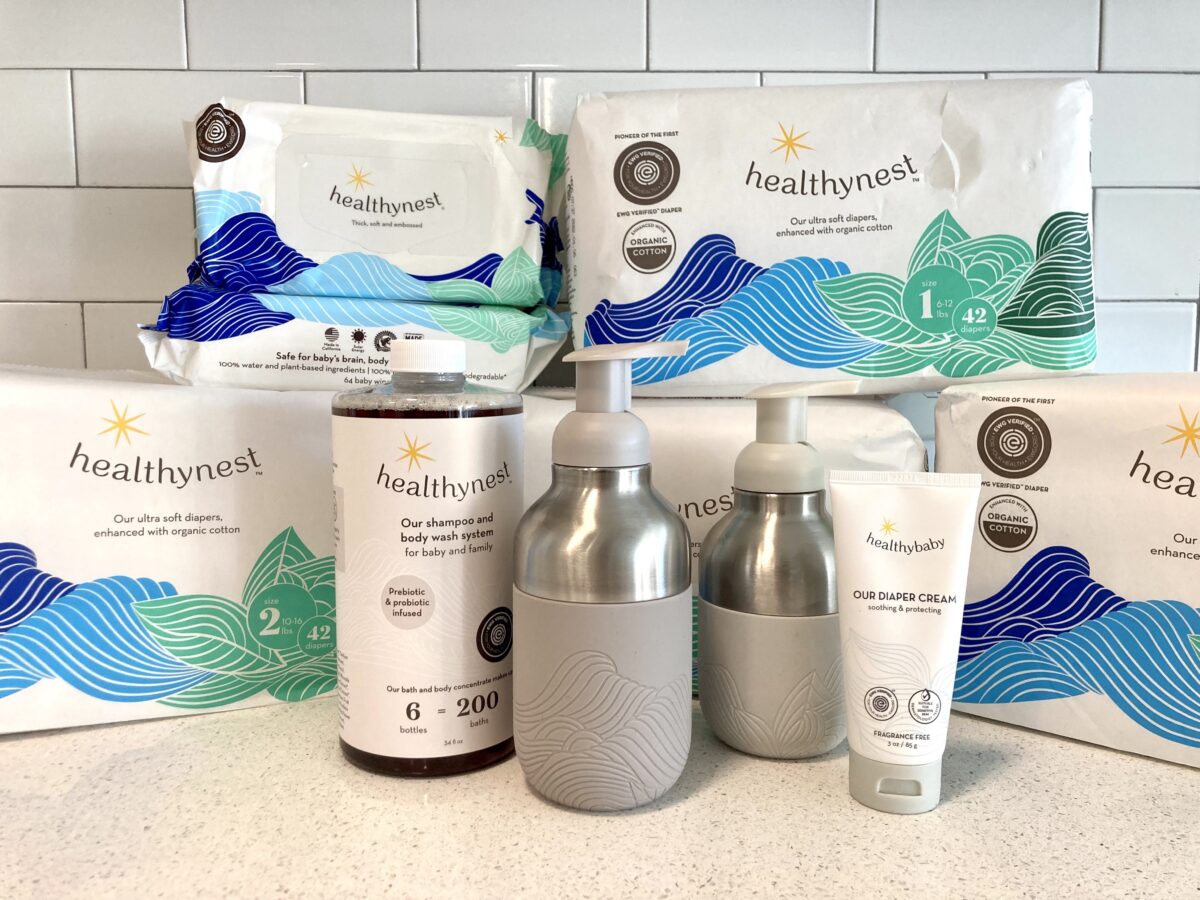
Price: $30 for a 40-pack, or save 30% with a Monthly Diaper Bundle subscription (starting at $105)
Size range: 1-6 (6-37+ lbs); Plus sizes 3-6 for pull-on pants (12-37+ lbs)
What makes them different: The only EWG Verified disposable diapers
These diapers are the only ones that are EWG Verified, which means they’ve been verified by the Environmental Working Group to be free from a long list of harsh chemicals, including phthalates, optical brighteners, and more. They also come with a few other third-party certifications as well, including OEKO-TEX, FSC, and B Corp.
We love the level of transparency from Healthybaby as well. You can find a full list of their ingredients and materials here.
This is the only disposable diaper brand that actually uses organic cotton at all, but note that it’s only used in 15% of the outer layer of the diaper. Better than nothing!
All of their diapers are plain white, so no inks or dyes here.
Healthybaby also carries non-toxic pull-ups, wipes, diaper cream, baby body wash, laundry detergent and household cleaners, and prenatal supplements.
Kudos
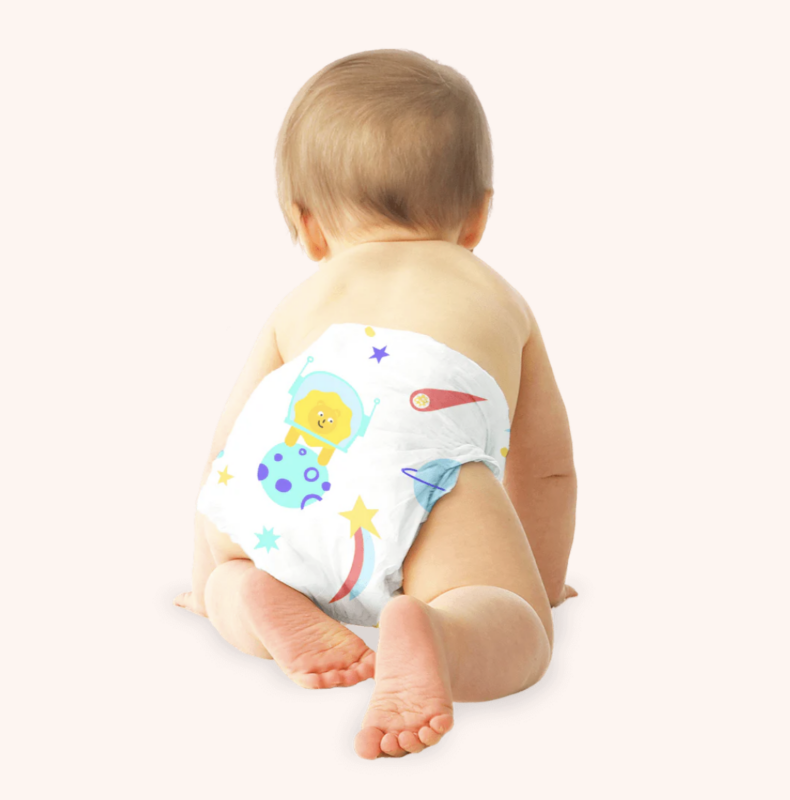

Price: $88 for monthly box (216 diapers), or sign up for a subscription starting at $78/month.
Size range: 1-6 (7-35+ lbs)
What makes them different: Only brand to have a sheet of natural cotton on the inner-most layer against the baby’s skin
Kudos diapers are OEKO-TEX certified and is the only brand to offer a layer of cotton next to baby’s skin. Even though it’s not organic cotton, it is grown and sourced in the USA.
Kudos also has great ingredient transparency; you can find out everything about their materials here. They offer both patterned and plain white options. They also have a wetness indicator to help you make sure your baby is getting enough milk and know when they need to be changed. They carry wipes, too!
Eco by Naty


Price: $11-14 (25-pack), or save 10% with a subscription
Size range: 1-6 (4-35+ lbs); Plus pull-on pants sizes 4-6 (18-35+ lbs)
What makes them different: One of the very first brands to offer plant-based disposable diapers
This brand is very similar to the others, with the majority of the diapers made from plant-based PE. They come with several third-party certifications, including OEKO-TEX and FSC. Founded in Sweden back in 1994, it was actually one of the first on the market with non-toxic disposable diapers.
Eco by Naty also carries wipes, pull-ups, a little potty for training, baby skincare products, and feminine products.
Ecoriginals

Price: $45 (starter pack) – $170 (for 12 bundles). Save 20% with a subscription.
Size range: NB-5 (<9 to 40 lbs); Plus pull-on pants sizes 3-6 (13-35+ lbs)
What makes them different: They offer a couple different trial packs so you can figure out if you like them and which diapers are best for you
Ecoriginals gets lots of great reviews from parents—they fit well and don’t leak, they’re soft on skin, and they’re as eco-friendly as possible.
These disposable diapers are also made from almost entirely natural materials. (They say they’re trying to get to 100% by the end of 2023!) The back sheet and the waistband are made from cotton, which is combined with plant-based synthetics similar to the other brands listed above. They also come with OEKO-TEX and FSC certifications, they’re carbon neutral, and they plant a tree with each order.
They only offer white diapers, so you don’t have to worry about dyes or inks.
Ecoriginals is based in Australia, but they do have a couple of different US warehouses, so shipping to the US is fast and affordable. They also carry wipes, (non-organic) cloth diapers, swim diapers, changing mats, and other accessories.
Honest

Price: $12 (14-pack), or $83/month for a diaper & wipes subscription (save 20%)
Size range: NB-7 (<10 to 41+ lbs); Plus training pants up to 5T
What makes them different: Available at big box stores like Target and Walmart
Like the other brands listed above, Honest brand diapers are also made from materials like TCF wood pulp along with PE and plant-based PLA. They offer both plain white diapers as well LOTS of different fun designs and patterns.
They also offer some great gift options like diaper “cakes” and subscription gift cards, which make for great baby shower ideas.
They also carry a LOT of other products, including wipes, training pants, all kinds of baby skincare, cleaning products, makeup and personal care for adults, and more. You can check out a more in-depth breakdown of the Honest brand here.
Coterie


Price: $100 (168-pack), or save 10% by signing up for auto-renew
Size range: NB -6 (<10 to 35+ lbs); Plus pull-up pants sizes 3-6 (16-35+ lbs)
What makes them different: Extremely absorbent
Coterie is a favorite among parents because they are some of the most absorbent non-toxic disposable diapers. That means less changes, less laundry, less diaper rashes, and less money. They also use “apparel-grade” materials for an even more comfortable fit for baby.
Coterie’s diapers are all white, so there aren’t any dyes or inks used. They also offer a Safety Report, which lists all of the toxic chemicals their diapers were verified to be free from in third-party lab testing. (They don’t share the actual lab results though, which would be cool!).
They also carry wipes and pull-up “pants.”
Hello Bello
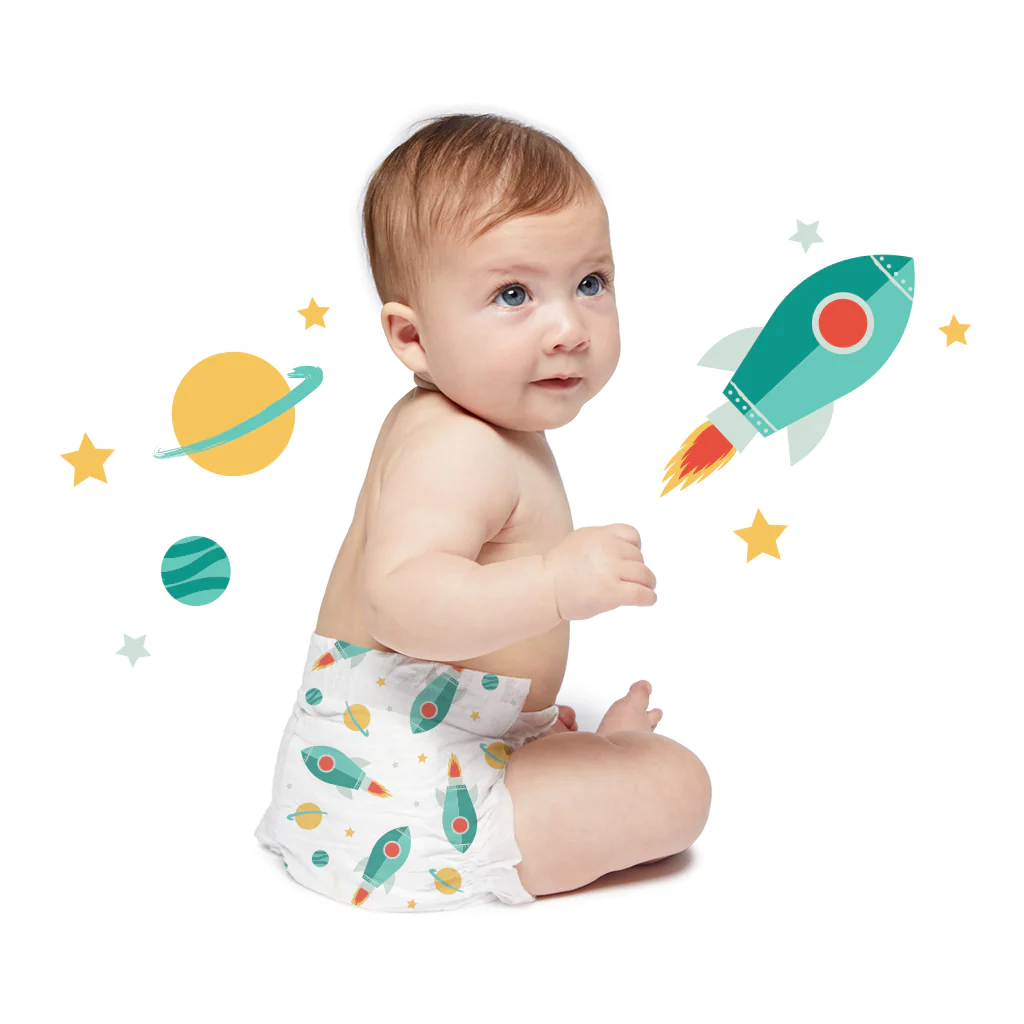

Price: $9/pack (17-32 diapers per pack, depending on the size). Various savings on bundles. First responders and military members get 20% off.
Size range: NB-6 (<10 to 35+ lbs); Plus pull-up training pants for 12M to 5T
What makes them different: They’re serious about bundling. Not only can you save money by building your own subscription bundle, but you can also get access to free products and extra discounts.
Hello Bello is another brand that’s great if you want a wide selection of different colors and designs—including seasonal ones. (Unfortunately, they don’t have a plain white option, though!) Some of the diapers are made in the USA and others aren’t, but they make it super easy to identify which ones are so you can choose accordingly.
Hello Bellow diapers are made from the same ingredients, like TCF pulp, SAP, PLA, and PE. However, they do not come with third-party certifications like many of the other brands do. Though they have gotten some parent awards from publications like Good Housekeeping and New York Magazine.
Hello Bello also offers lots of other things like training pants, baby skincare, swim diapers, vitamins, home cleaning products, and more. They’re also available at Walmart!
Dyper

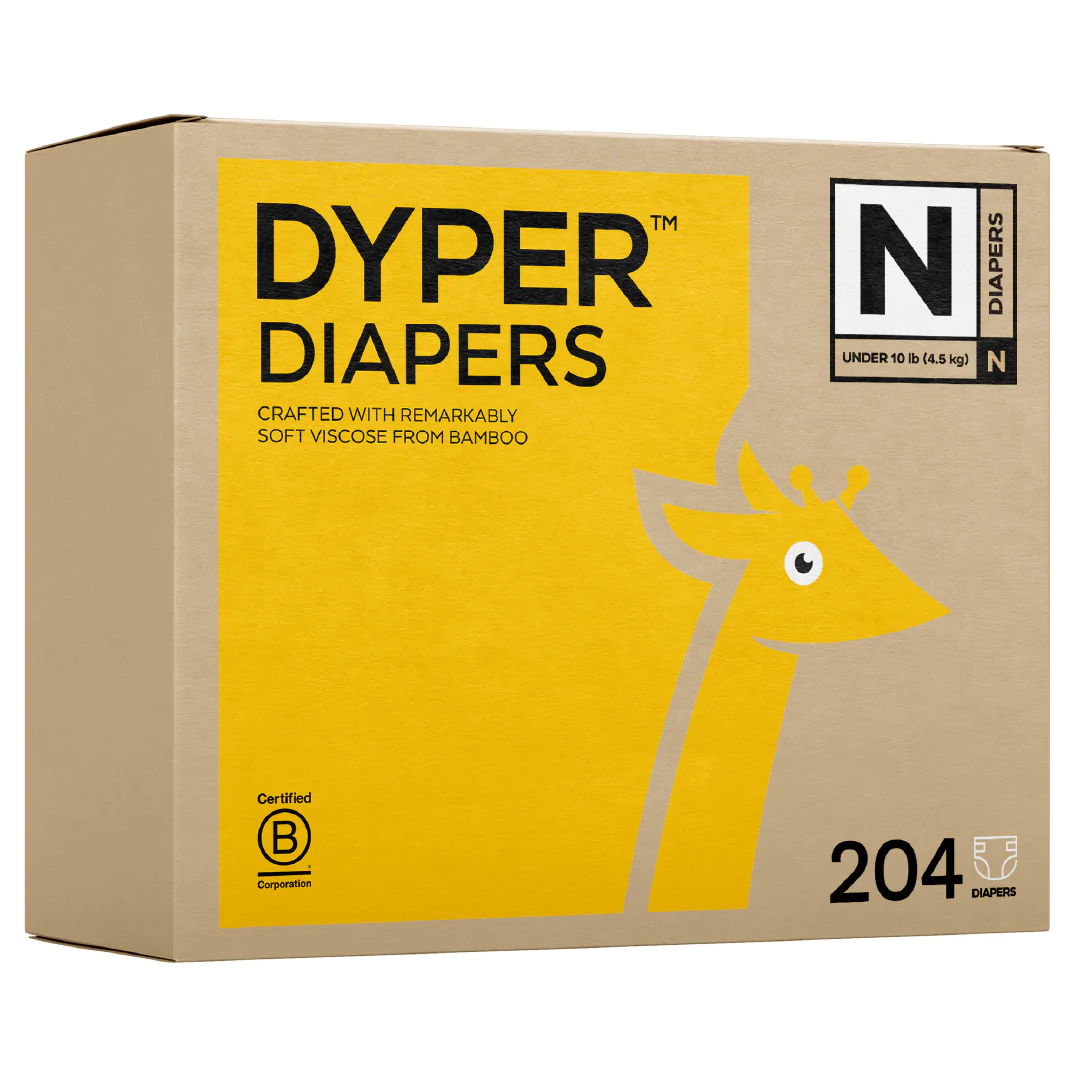
Price: $99 (108-204 diapers, depending on the size); or save 10% with a subscription
Size range: NB-6 (<10 to 35+ lbs); Plus pull-on training pants in sizes 2T-6T (<34 to 41+ lbs)
What makes them different: Uses bamboo
Dyper’s diapers are made from much of the same plant-based synthetic materials as the other brands listed here, but they also use bamboo as well. Their responsibly-sourced bamboo is manufactured using a closed-loop process, and it’s also STeP by OEKO-TEX® certified, which provides a certain level of oversight into the safety of the chemicals used in the manufacturing process.
Dyper is also trying to help solve the non-biodegradable problem with their REDYPER program. After you sign up, you leave your dirty diapers on your porch where they’re picked up, taken to a TerraCycle facility, and apparently turned into biochar. The program is only available in certain cities for now but they’re working on expanding.
Dyper is also available at lots of retailers, including Walmart, Babylist, Grove Collaborative, and more. They also carry pull-ups, wipes, cloth diapers, skincare, and accessories.
Freestyle


Price: $92 (120-204 diapers per box, depending on the size); or save 15% with a subscription
Size range: 1-6 (8 to 35+ lbs)
What makes them different: Uses bamboo
Freestyle’s diapers are also made with a “100% tree-free, bamboo core,” (which they call BAMBOOTEK™) and they’ve ensured us that they are processed using a closed-loop system and are free from elemental chlorine and carbon disulfide. Their bamboo is grown using organic methods, is FSC certified, and ECOCERT certified as well.
They’re super soft, absorbent, and come with more unique designs than other brands (they work with artists on exclusive collaborations).
ATTITUDE


Price: $15 (14-pack) to $72 (88-pack). Save 10% when you sign up for a subscription.
Size range: NB-6 (<11 to 66+ lbs)
What makes them different: They’re size 6 diaper is suitable for kids all the way up to 66 pounds, so they can be used by older children.
ATTITUDE is one of our favorite one-stop-shops for non-toxic personal care and cleaning products. In addition to their collection of cleaners, laundry detergents, shampoos, etc., they also carry disposable baby diapers and wipes!
Their wood pulp material is FSC certified and they use non-GMO corn starch. They only offer white diapers, so you don’t have to worry about any inks or dyes.
ATTITUDE’s diapers are labeled as “biodegradable,” which is kind of annoying since no disposable diapers are entirely biodegradable. They just say that because they’re made from more biodegradable ingredients than traditional disposable diapers (about 50% of the materials are biodegradable).
Thrive Market

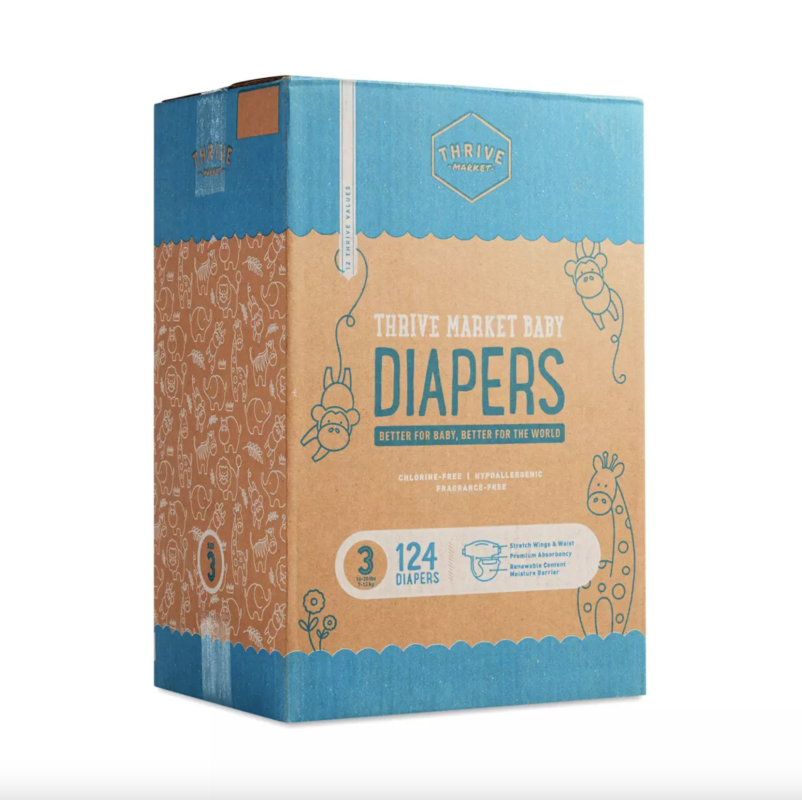
Price: $30-52 (80-144 diapers, depending on the size)
Size range: NB-6 (<10 to 35+ lbs)
What makes them different: Just more convenient/affordable if you’re a Thrive Market member
If you’re already a member of Thrive Market, then ordering diapers from them might be one of the most affordable and convenient options. Although they don’t come with any third-party certifications, these diapers are also made out of pretty much all the same materials as the others—TCF pulp, SAP, PLA, and more. Most of the diaper is white, with a little colorful design on the front panel.
They also carry wipes, training pants, and of course, LOTS of other baby/kids care, personal care, home cleaning products, and food.
Even More Disposable Diaper Brands!
The list doesn’t end there. Here are some more brand that carry disposable diapers made from basically the same materials as the ones above:
- Abby&Finn
- Bambo Nature
- Earth & Eden
- Happy Little Camper
- Joonya
- Millie Moon (available exclusively at Target)
- Seventh Generation
- Parasol
What About Huggies?
Most of Huggies diapers are still made with petroleum-derived synthetics. However, their “Special Delivery” diapers are made from mostly the same plant-based materials as the recommended brands above, so if you’re going to go for Huggies, those would be your best option.
However, Huggie’s fluff is elemental chlorine free (ECF) instead of total chlorine free (TCF). While ECF is still better than traditional chlorine bleaching, this method still uses chlorine dioxide, which is a chlorine derivative. So it’s not quite as non-toxic as TCF.
What About Pamper’s?
Like Huggies, most of Pamper’s diapers are still made using conventional plastic materials. However, their Pamper’s Pure diapers are made from many of the same plant-based synthetics as the recommended brands above, so those would be your best option. However, Pamper’s Pure fluff is also made using the ECF method instead of TCF.
What About Cuties?
Cuties diapers are made from much of the same ingredients are the non-toxic diaper brands recommended above, including SFI sourced plant-based fluff, a cotton-enhanced dryness layer, SAP, polypropylene, etc. Just like Huggie’s and Pamper’s Pure, though, Cuties wood pulp fluff is also processed using the ECF method, which means they’re not totally free from all chlorine derivatives.
What About Kirkland’s Diapers from Costco?
Costco’s diapers are an okay choice. And if you’re a Costco member, they’re definitely going to be one of your most affordable options. They’re made from a lot of the usual plant-based ingredients (wood pulp, sugarcane polyethylene, etc.) combined with synthetics (SAP, elastics, etc.). However, Kirkland’s diapers are also made using the ECF method instead of TCF.
Better Ingredients for Reusable Cloth Diapers
With cloth diapering, it’s much easier to decrease the overall number of materials as well as increase the amount of actually organic materials.
There are usually around 10 different materials needed for disposable diapers, for the inner and outer layers, the absorbent core, the elastics on the sides, etc. But for the most part, reusable cloth diapers can just be made out of one material for the inner layer (like organic cotton) and then another water-resistant material for the outer cover.
Therefore, it’s easier to find cloth diapers where the material that’s actually touching your baby’s skin is 100% organic cotton (which the brands below carry).
You can’t really find 100% natural/organic material for the outer layer because this is the part that needs to be water-resistant. The best material currently available tends to be thermoplastic polyurethane (TPU). This is a kind of petroleum-derived plastic, but it’s at least better than some of the alternatives, like PVC.
The Best Organic Cloth Diapers
Esembly

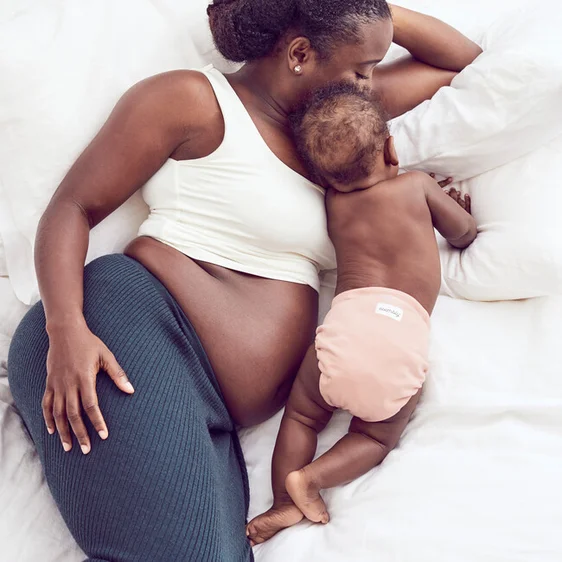
Price: $12.50 (inner) – $18.50 (outer)
Size range: Two sizes: 1 (7-17 lbs) and 2 (18-35 lbs)
For the inner layer, Esembly uses 100% organic cotton.
They only come in in two sizes, which helps you save money over the long run. They come with a stretchy rippled core and adjustable snaps so they can grow with your baby. For extra absorbency, you can add liners, which are made out of organic cotton plus a layer of recycled fleece.
The waterproof outer is made out of OEKO-TEX and GRS certified recycled polyester and then covered with a waterproof TPU laminate. They come in solid colors as well as a variety of super cute designs. They double as a swim diaper, too.
They also offer both reusable and disposable wipes.
GroVia

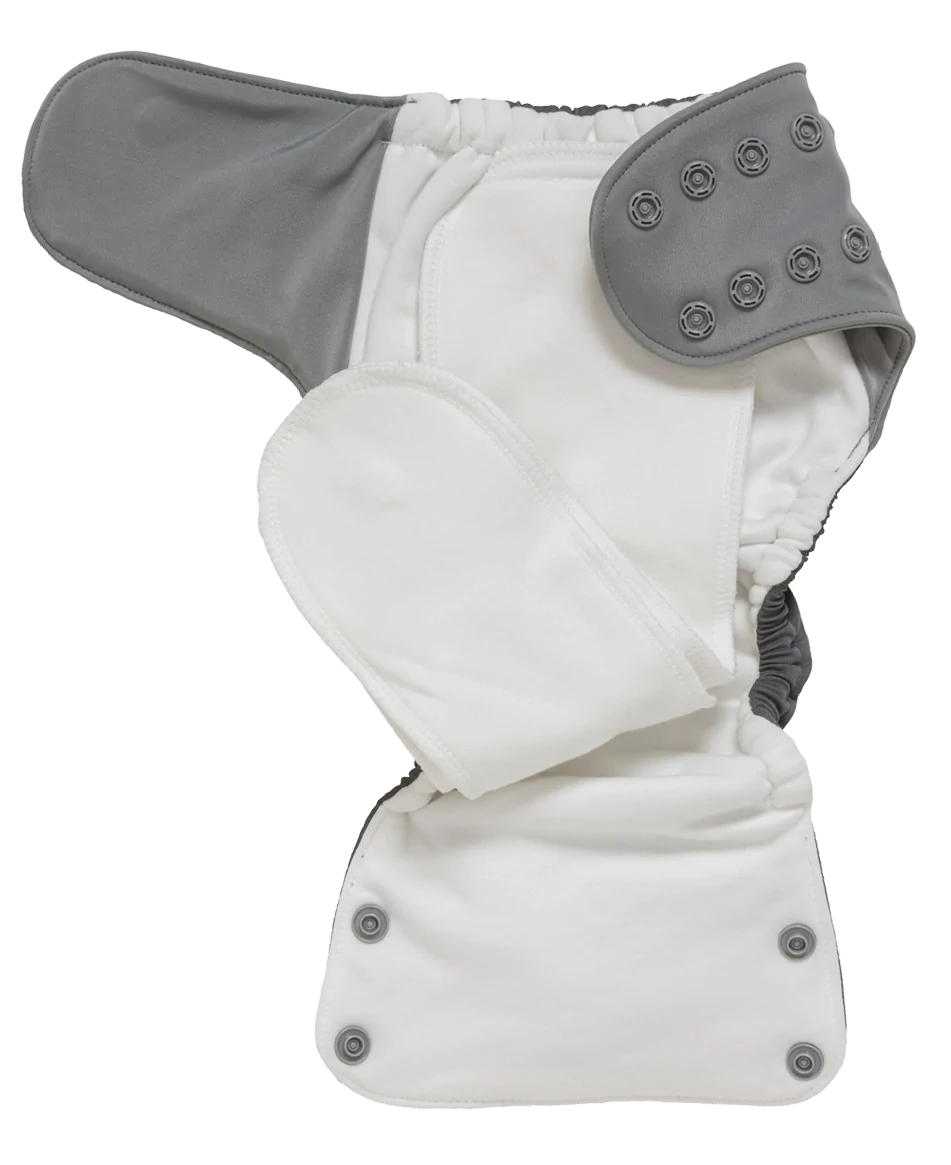
Price: $26 (organic all-in-one)
Size range: One size for babies 10-35 lbs
GroVia carries several different kinds of reusable diapers (some of which are mostly organic and some that aren’t).
Their Organic All-In-One Diapers only come in one size and have adjustable snaps to fit babies from 10 to 35 pounds. It’s called an All-In-One because you don’t need an inner layer with an outer cover—it’s just one diaper.
The inner part is made out of 100% cotton (certified by Ecocert) and the outer part is made out of a layer of water-resistant polyester TPU along with two more layers of organic cotton.
GroVia carries other products, too, including a Hybrid diaper that can be used with either disposable or reusable inner layers. They also have “BIG O.N.E.” diapers which are suitable for older children up to 70 pounds. (However, these diapers are not currently available in organic cotton.)
Make sure you check the Material details on the product page before buying from GroVia to make sure you get what you want because some of their diapers are made with organic cotton while others are almost entirely synthetic.
Smart Bottoms


Price: $18-$34
Size range: NB – 5T (trainers)
Smart Bottoms also offers a few different types of cloth diapers, including ones specifically made for newborns, others that grow with your baby, toddler trainers, and more.
Most of their products are made with organic cotton and/or hemp for the inner layers and then TP, PUL, and/or polyester for the water-resistant outer layer.


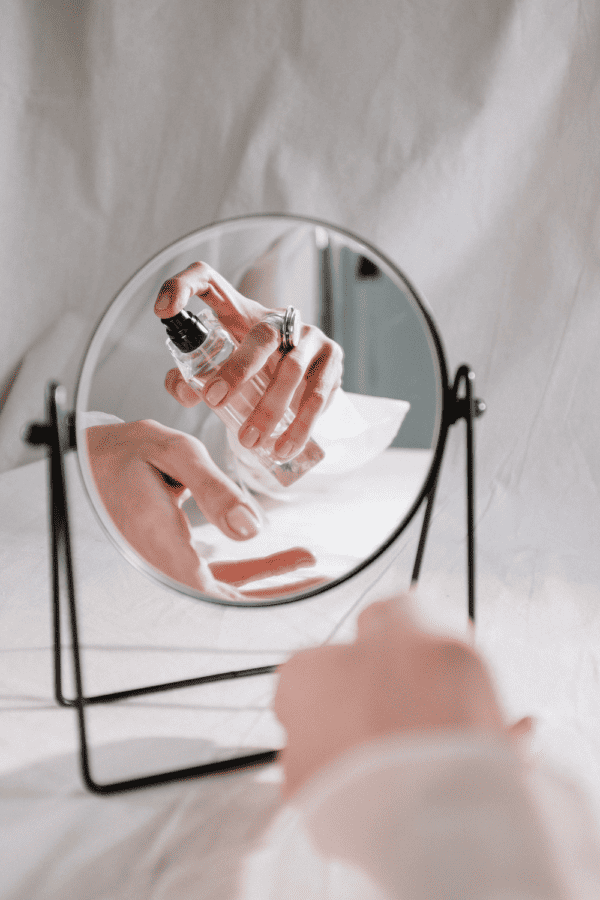
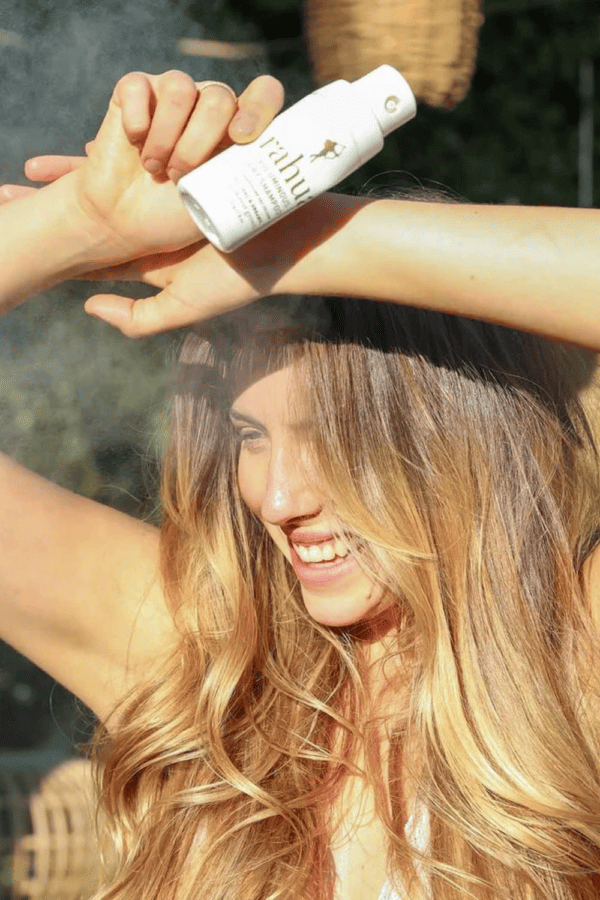
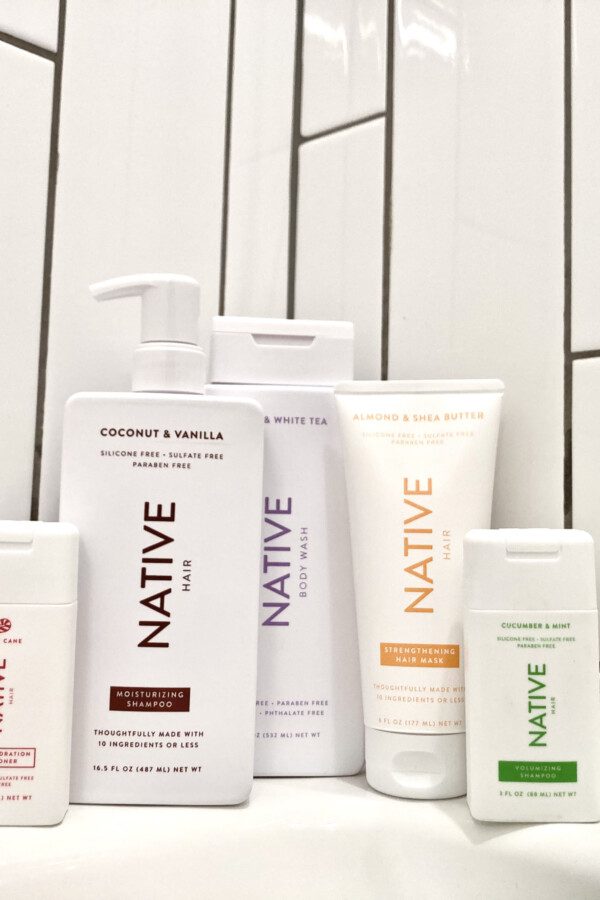
Have you heard of the Bambo Nature diapers and wipes (https://bambonatureusa.com/)? They seem pretty good and have all sorts of certifications including Okeo Tex 100 and FSC. They are bamboo and I know the processing there can be questionable, but does FSC mean that the processing practices are all right?
Hi Evelyn,
Bambo is a good brand! (You’ll see them under the “even more brands” section toward the bottom.)
FSC means the plant material (in this case, bamboo) was sourced from responsibly-managed forests.
What are your thoughts on Eco Pea diapers?
https://ecopeaco.ca/ & https://ecopeaco.com
Yea, Eco Pea Co is a pretty good option! We included them in our wipes guide. They use bamboo; I just need to find out how it’s processed.